

Free walking tour near Catania
Others cities to visit after catania, where are you traveling to.
- You are here:
How to spend a day in Bergamo
Self-guided walking tour of catania, sicily.
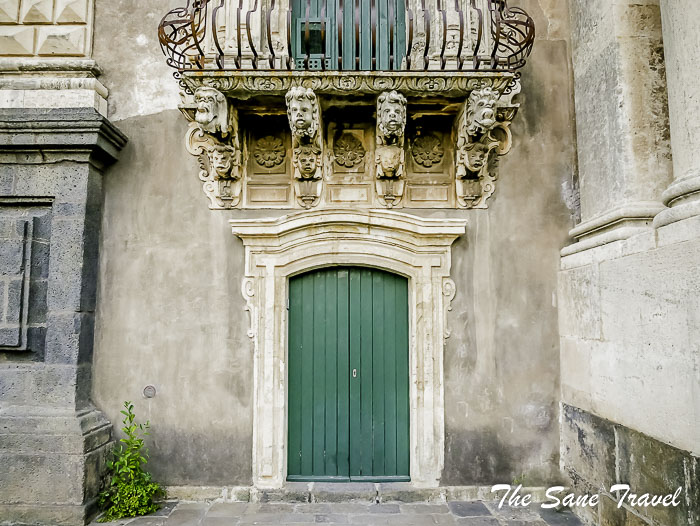
Let’s start with Cathedral Square. La Piazza del Duomo or Cathedral Square in Catania represents the heart of Etna city. A splendid circuit of Sicilian Baroque masterpieces characterises the scene in the Piazza del Duomo. Rebuilt on the site of the older medieval piazza in 1700, it is a major meeting point for locals and tourists.
Catania Cathedral
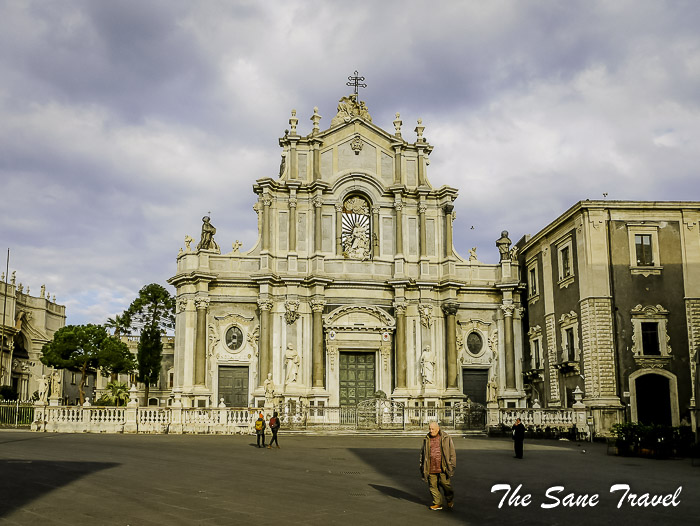
La Elephant Fountain
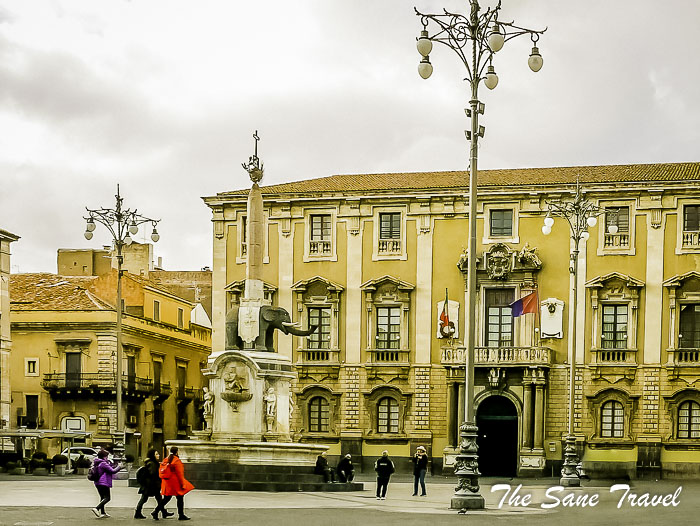
Catania Town Hall
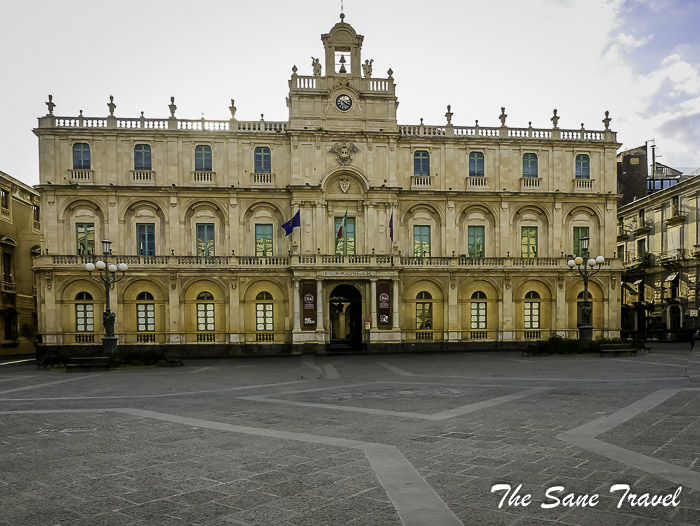
Amenano Fountain
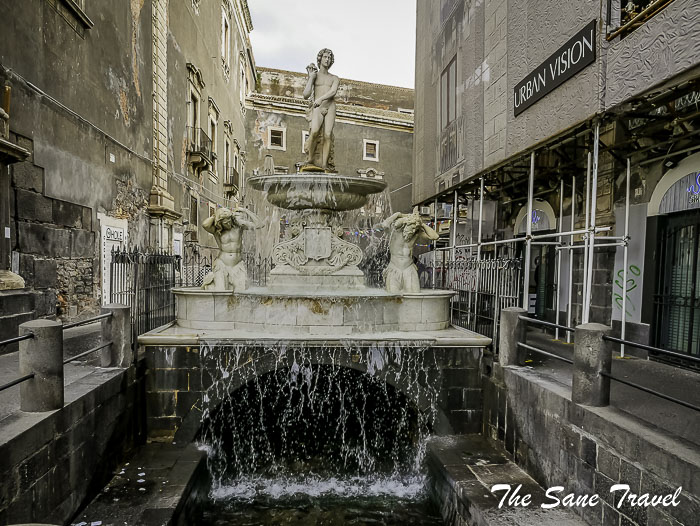
The Palazzo dei Chierici
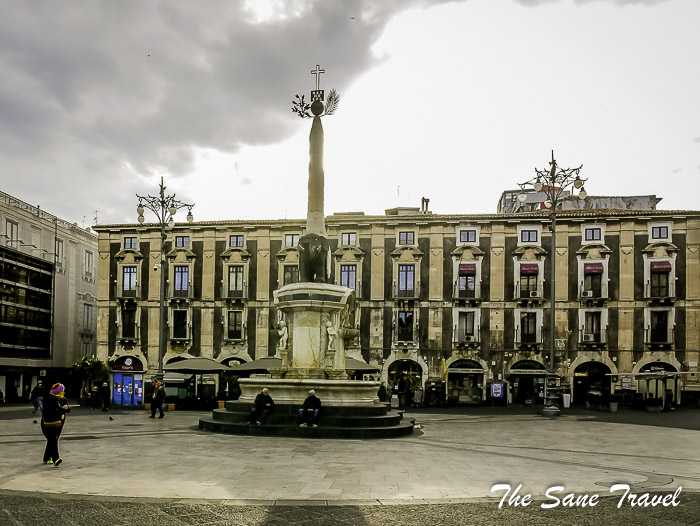
San Placido Church
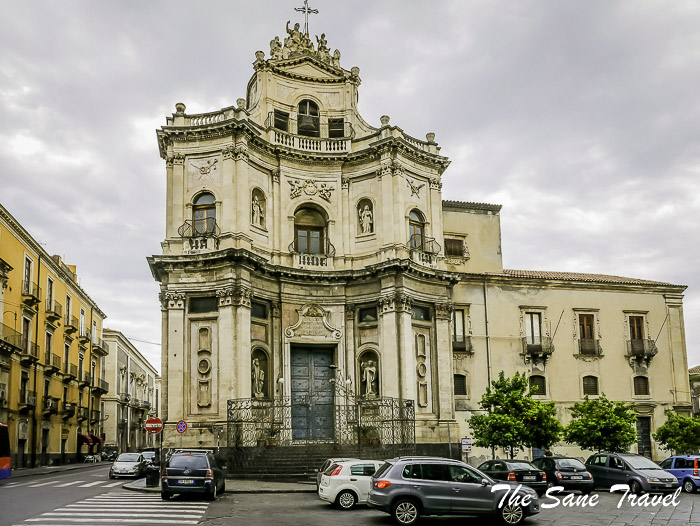
Address : Piazza S. Placido Afterwards, take a small detour and find Via Bonajuto which is known for The Bonajuto Chapel.
The Bonajuto Chapel
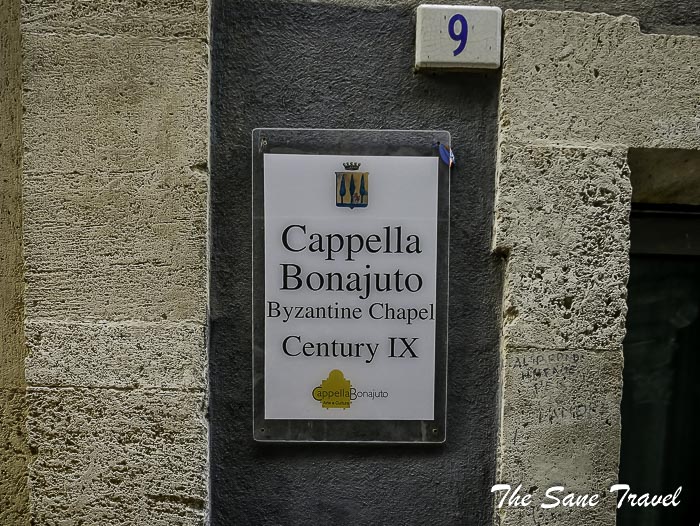
Address : Via Bonajuto, 11
After visiting Via Bonajuto, head to the Teatro Massimo Bellini. Before you go, it is worth learning a few facts about the famous composer. Born in 1801, the composer Bellini became well-known for his expansive melodies that served as an inspiration for many Italian composers thereafter. Bellini spent his first 18 years in Catania. At the age of 19, he left Catania for Naples, where he studied at the Conservatory. He died at the age of thirty-three in Paris.
The Teatro Massimo Bellini
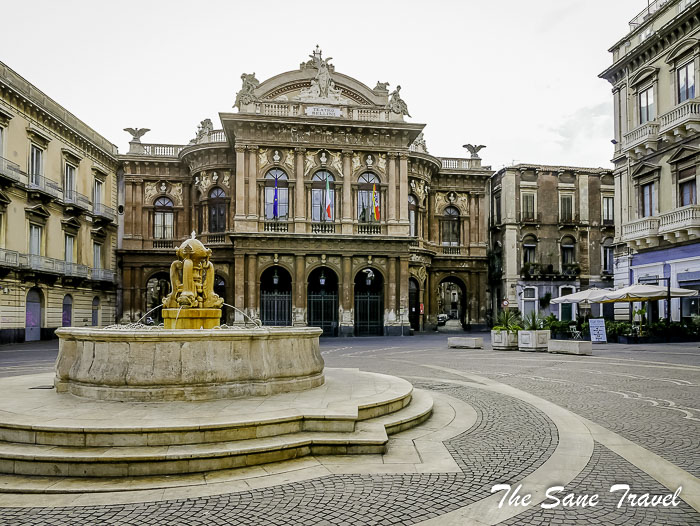
Then make your way to the monument of Vincenzo Bellini.
The Monument of Vincenzo Bellini
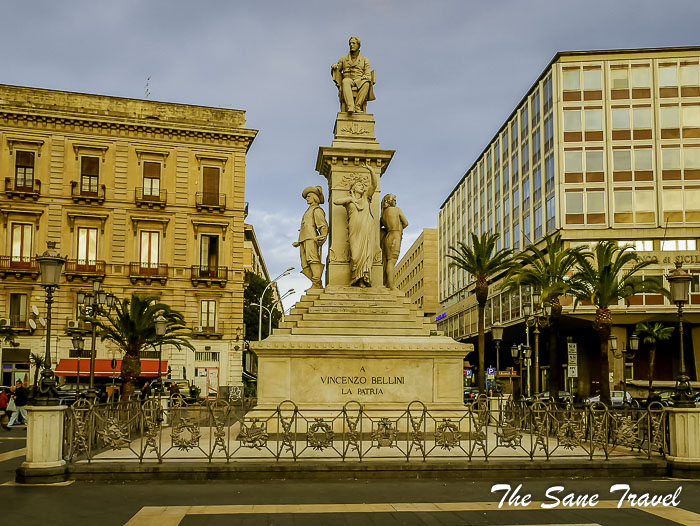
The Church of Minorites
Built in the late 18th century, the church follows the pattern of the basilica with three naves divided by pillars. The façade is of white limestone and creates a magnificent contrast with the black colour of the street and pavement. The church boasts a double staircase with 13 marble steps and two holy water springs positioned on marble tables. The springs are exceptional works because of their technical skill and the harmony of composition. Notice several impressive artworks including an altarpiece dating back to the late 14th century, a l’Arcangelo Michele figure covered by an embossed silver plate, a marble Crocifisso from the late 18th century, and an Annunciazione by the 17th century Flemish painter Guglielmo Borremans.
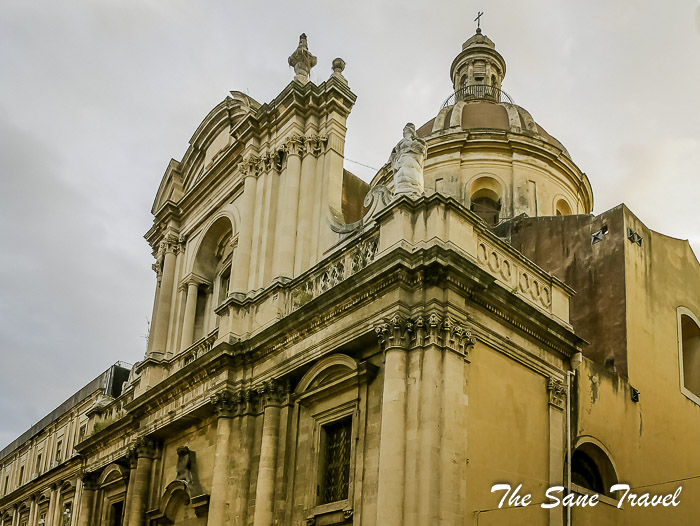
The Monastery of San Nicolò l’Arena
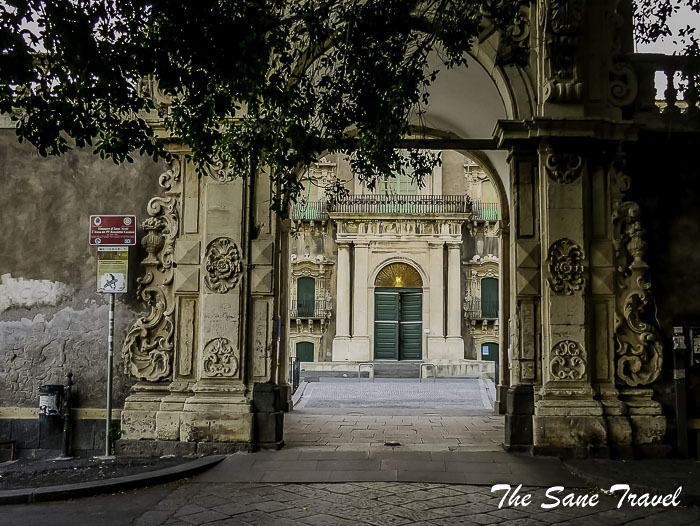
Address: Piazza Dante Alighieri, 32
The archaeological area
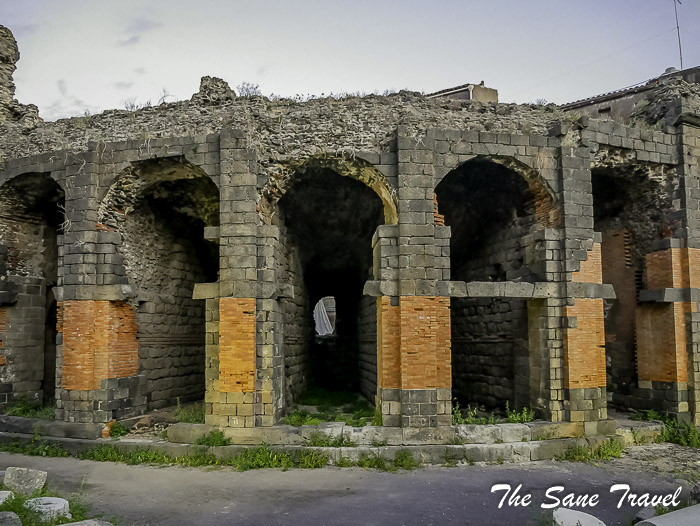
Ursino Castle
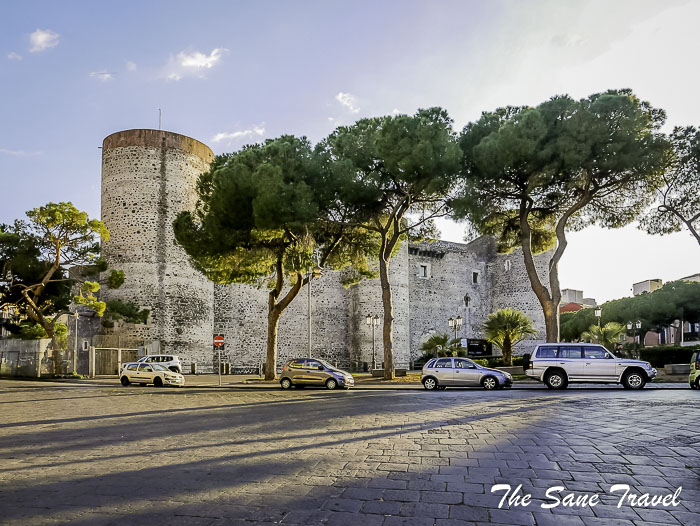
Address: Piazza Federico di Svevia
Now you can go back to your tour starting point Cathedral Square.
Practical information
The total length of the walking tour is only 3.7 kilometres. Your real time for that will depend on your pace and time spent at extra stops. It might take a whole day or just a few hours.
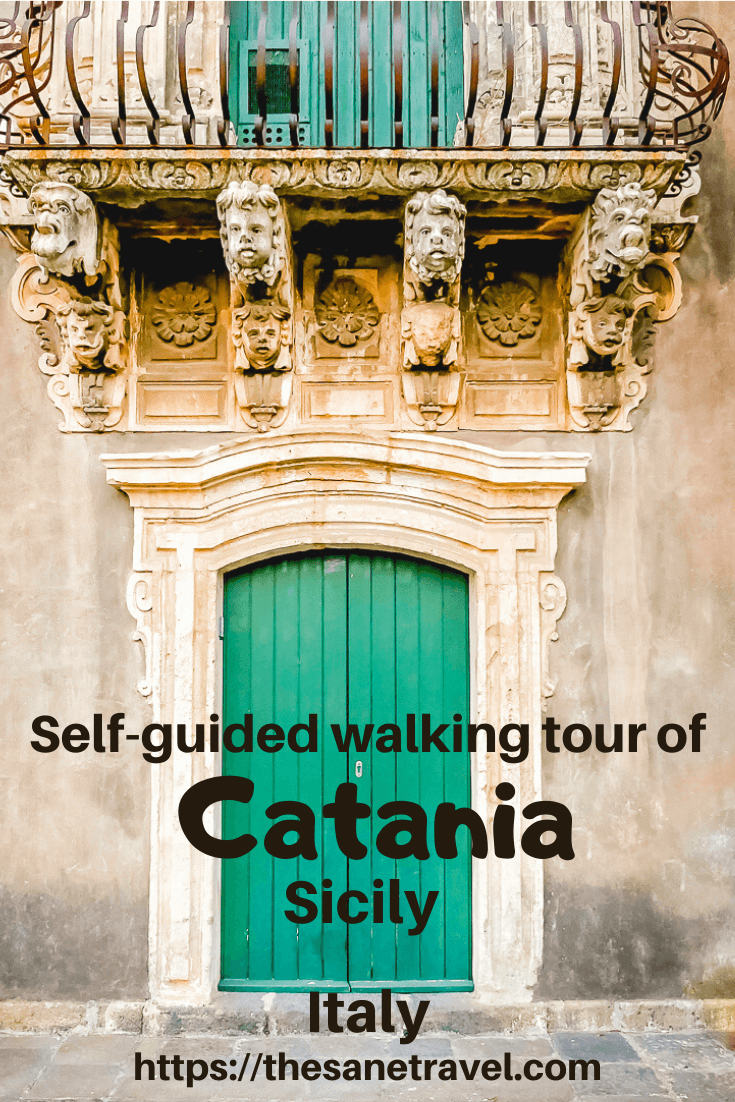
- Posted by Anita on June 11, 2021
Author: Anita Sāne

About the author Anita is a part-time traveller, passionate photographer and a retired career woman from Latvia, travelling mostly solo for more than 15 years. She is a skilled travel planner who plans and executes her travels by herself. Anita wants to show you how to travel the world and open your mind to new experiences. Follow her on Facebook , Instagram , Pinterest , Twitter and Bloglovin .
1000 Characters left
My comments
Related articles, 15 stunning images to make you want to visit siena, 2 day venice itinerary in 20 pictures, certosa di pavia a hidden gem near milan.
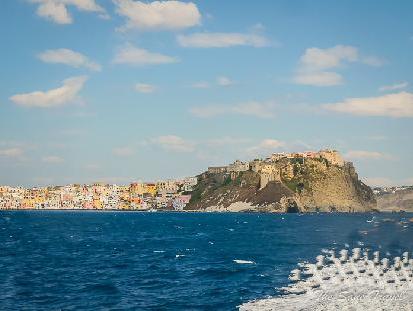
Top travel tips for visiting Ischia
Ischia is located in the Gulf of Naples, approximately 30 kilometres (18.6 miles) from Naples, Italy. It is the largest island in the gulf, with an area…
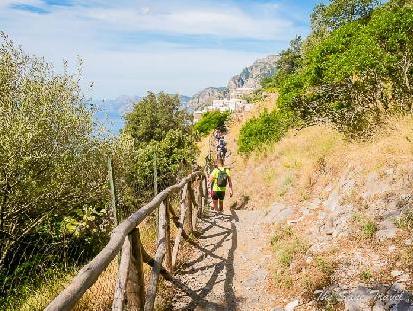
Naples, Sorrento, and the Amalfi Coast 7-day itinerary
Visiting Naples, Sorrento, and the Amalfi Coast is a great way to experience Italy's culture and natural beauty. This seven-day itinerary is excellent…
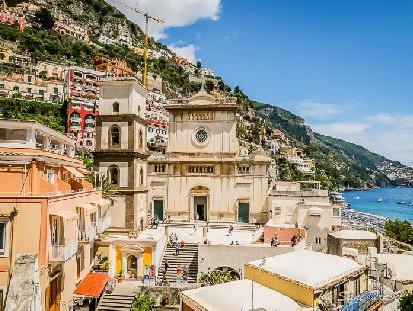
Best UNESCO Heritage sites in Italy
As of 2022, Italy has 58 listed UNESCO World Heritage sites – a mark of the cultural and geographic richness of the nation. Out of all Italy's heritage…
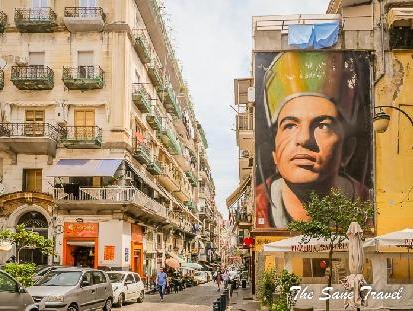
Self-guided walking tour of Naples, Italy
Italy is a country I love. But so far, I was somewhat reluctant to visit the southern part of Italy because I knew that that was different. Just like being…
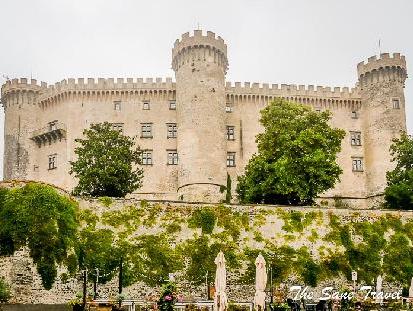
9 places to include in your weekend getaway from Rome
Rome itself is a magnificent city with so many things to see, but if you visit the city many times, you maybe have to think about a day trip from Rome…
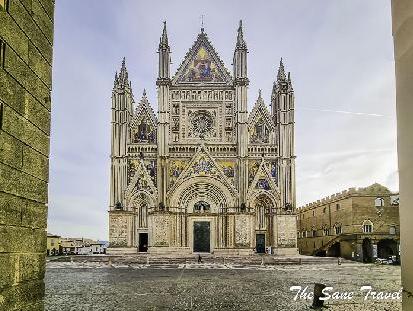
Orvieto – a perfect day trip from Rome
If you are looking for a great day trip from Rome, Orvieto is an excellent choice. Orvieto is one of the oldest towns in Italy, situated on a tufa cliff.…
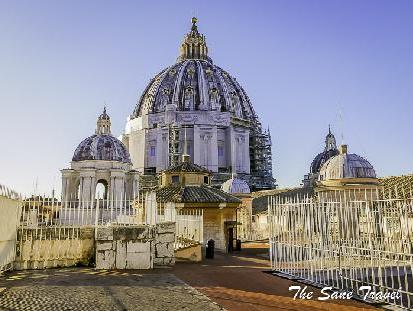
4 Major Basilicas to visit in Rome
If you have been to Rome, you have likely visited St. Peter’s Basilica. Interestingly enough, it’s one of the four major Catholic Basilicas located…
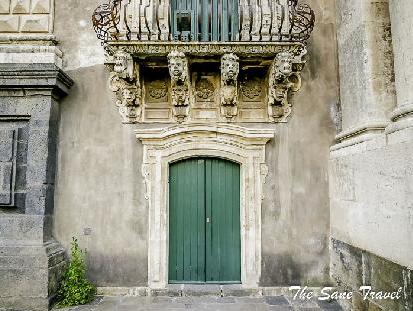
Catania is situated in Sicily at the foot of the impressive Mount Etna, with a panoramic view of the sea. The city was founded by the Greeks in 729 BC…
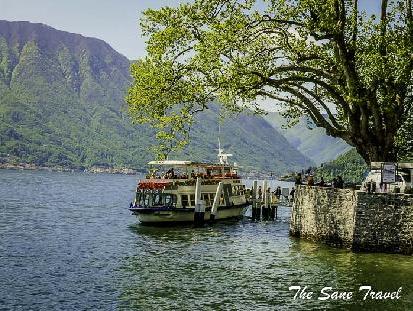
Lake Como a perfect day trip from Milan
Located at the foot of the Alps, Lake Como boasts one of the most picturesque sceneries in the world. Lake Como is the third largest lake in Italy after…
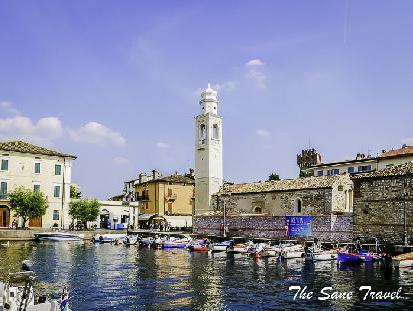
Best towns of Lake Garda to see in a day
Of course, it is a shame that you have only a day to visit Lake Garda in Italy, but if this is the case, I got you covered. Check my advice for the best…
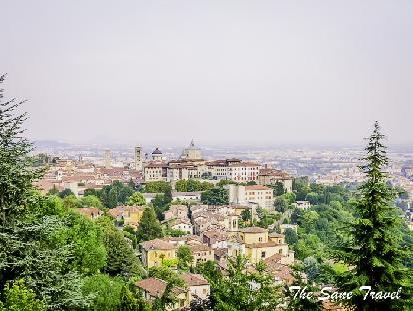
The beautiful city of Bergamo is located just a few miles from Bergamo airport. A local bus connects the airport to the city of Bergamo with just a 20…
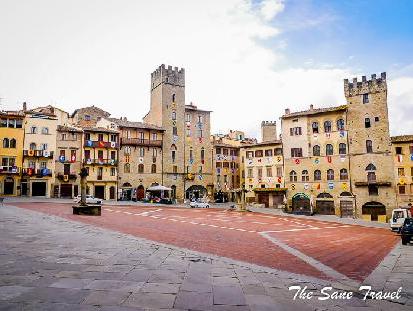
Top things to do in Arezzo, Tuscany
When thinking about the best places in Tuscany and about things to do in Tuscany, do not forget to include a visit to Arezzo. Even though it is unfairly…
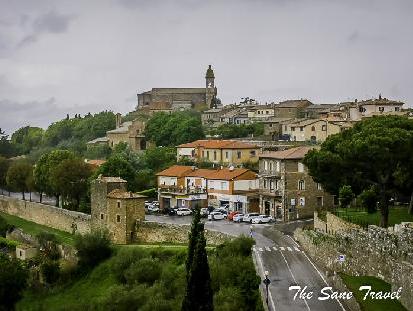
8 Tuscany towns to include in your road trip itinerary
Tuscany has always been one of my dream destinations because of the awesome scenic pictures I have seen. Finally, I made a trip to Tuscany myself, and…
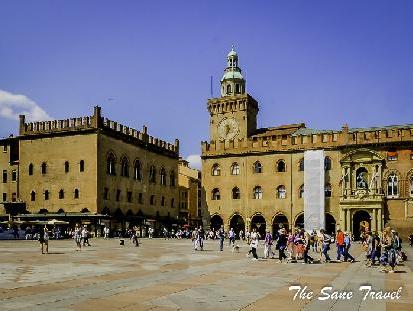
What to do in Bologna in a day
Bologna is the capital and the largest city of the Emilia-Romagna Region in Northern Italy. The population of its metropolitan area is about one million…
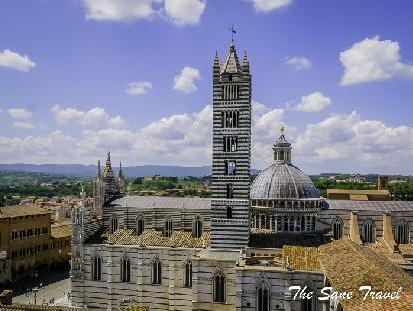
UNESCO heritage listed Siena, Tuscany is one of the best preserved historic cities in Italy. I find it to be one of the most beautiful cities in this awesome…
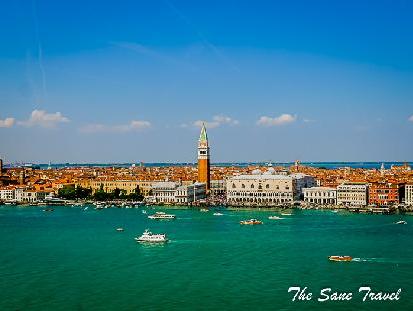
Venice is a beautiful city that most travelers want to visit at least once. So it is also very touristic, busy and expensive. Still, there are many romantic…
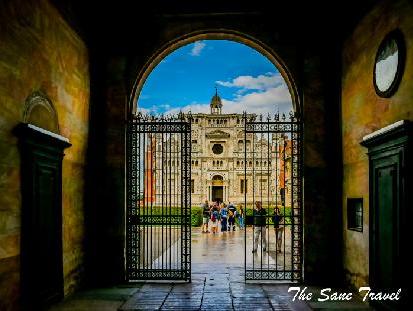
I have noticed that one of the most popular Italian sights on Instagram is Milan Cathedral. But have you heard that half an hour away from Milan you can…
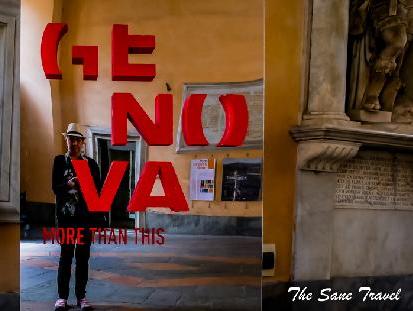
What to see in Genoa on a Monday?
For me Genoa is like a sleeping beauty: sleeping due to its obvious disinterest in tourists and a beauty because it has much to offer. Let me introduce…
- Contacting me
- My travel wishlist
- The Liebster award
- New Zealand
- United Arab Emirates
- Window seat please!
- Switzerland
- The Netherlands
- The Philippines
- United Kingdom
- United States
- Plan your own trip
- Travel light
- Helpful websites
- Great Britain
FREE WALKING TOUR CATANIA
Don't miss it! It's fun, it's free!
Catania is a beautiful city that has fascinated travelers for centuries.
The city and its people have a strong connection with the volcano because we are made of the same substance.
We are licensed local guides and long-time friends who decided to start a free walking tour and private tours project to offer a deeper and original experience of Catania through the eyes of Catanesi DOC to all travelers interested in our history, traditions and curiosities .
You decide the value of our free walking tour, touching the main aspects of the city : starting from its matrix Etna and the several eruptions and earthquakes that shaped the land, you will learn about the Greek foundation and the numerous civilizations, such as Romans, Muslims, Normans, Swabians, Spanish… that layer upon layer moulded Catania and our uniqueness .
Do not miss our private tours too! There you can enjoy the best Sicilian food and nightlife in a baroque frame and discover our street art or visit Syracuse , the Greek Pearl of the Mediterranean Sea. We are professional tourist guides and our main aim is to give everyone the opportunity to be guided within the city, to get in touch with the Sicilian culture and to enjoy a real and authentic experience . So, according to your appreciation of the tour, you will value it with your free contribution .
Free Tour Catania is proudly a member of the Free Tour Comminity , a global non-profit organization uniting the best-rated local free tours . Responding to the superpower of international platforms that apply high fees on free tours, the Free Tour Community sends you directly to the page of the local free tour of the city you want to visit. Are you planning to visit another city? Click Here!

Our Standard Free Walking Tours are performed in English .
Please contact us at [email protected] for private paid tours in other days and in other languages (Italian or Spanish).
Tour availability
Tuesday afternoon at 3 p.m.*
Thursday afternoon at 3 p.m.
Friday afternoon at 3 p.m.
Saturday morning 10 a.m.**
*ON TUESDAY THE 16TH OF APRIL THE TOUR WILL START AT 10.30AM
**ON SATURDAY THE 11TH OF MAY THE TOUR WILL START AT 3PM
***NO TOURS AVAILABLE FROM THE 18TH TO THE 26TH OF JUNE***
Meeting point is at Piazza Università , just in front of the “Unicredit” ATM.
The tour takes about 2 hours, it is suitable for disabled people.
Reservation is required.
The tour will be performed with a minimum number of participants.
Private paid Tours in Catania
Our Private Catania Tours are upon request . Experience the various souls of our city.

Bite tour – Street food in Catania by day

By(te) night tour – Street food in Catania by night

The outer ring tour brings you off the beaten paths

Check out our Street art tour in Catania
Private paid Tours in Syracuse

Ortygia in Syracuse is simply unmissable. Experience the city of the Greek Tyrants with us!

We love Palermo! Don’t miss our friends’ Palermo free walking tour!

Book today!
Meeting point:.
University Square, in front of the “Unicredit” ATM.
TOUR AVAILABILITY:
Please contact us at [email protected]
for private paid tours in other days and in other languages (Italian, Spanish or French).
Tours will be performed with a minimum number of participants.
You can’t miss us, we are the excited people holding an orange folder and ready to discover the city with you!
Booking calendar.

Help our free tour project to continue!
Leave a review!
Tripadvisor

A walking tour of Catania (and other tips!)
Catania lies on the east coast of Sicily. It is nestled at the base of Mount Etna, one of the two most active volcanoes in Europe (the other is Stromboli, also in Italy).
It’s a very walkable city, with many of the main sights being close together in the city center. I put together this walking tour of Catania for readers who like to explore like I do – on foot!
Siete pronti? Andiamo! Put on your best walking shoes, and get ready for some spectacular Sicilian sightseeing!

Luggage and Life’s walking tour of Catania
I got back from my third trip to Catania a few weeks ago. I fall in love with the city more with every visit.
This walking tour covers the city center’s main sights. On my most recent trip, I did a few new things, and I’ve updated this post to share them with you.
I’ve provided pictures here to help you on your way, and I’ve written some key information about each sight with references, so that you can look into anything that fascinates you more deeply.
Visiting Catania during the summer
If you’re in Catania during the summer months, I’d recommend doing this tour either before lunch time, or in the late afternoon when it begins to cool down. When we visited it was 36 C/97 F one day, but surprisingly, it wasn’t unbearable, thanks to the constant relief provided by the breeze coming off the water. You should plan on a bit of a rest after lunch, as many shops close during that period.
Visiting Catania during the winter
Having just been to Catania in February, I witnessed a quieter side of the city; however, everything was open. Unlike other places in Sicily, Catania doesn’t close down during the low season. In Taormina , for instance, some shops and restaurants close after Christmas and don’t reopen until March.
It was really pleasant to be in Catania during the low season. The weather was perfect (20 C/68 F). If you have the chance to go during the shoulder or off seasons, take it!

Understanding Catania
Catania and etna.
Being built at the base of Mount Etna means that reminders of the volcano and its lava are inescapable in Catania. It’s visible in the distance, and many of the city’s monuments are built from gray-black volcanic rock.
Once you dig into the city’s history, you’ll find that the volcano has literally shaped it. It has buried a river that used to run through the city center. It has destroyed buildings with eruptions and earthquakes. It has caused the resilient Catanesi to recover and rebuild the magnificent city you can visit today.
Etna has even found its way into the local food. Because of the fertile soil left behind by the destructive lava, the area around it is known for producing unique food and drink. Vineyards dot the base of the volcano, and they produce what are regarded by some as the best Sicilian wines. The honey from the area is known for its rich color, and has been nicknamed l’oro dell’Etna , or the gold of Etna .
On my first visit to the city, I did a bus tour of the volcano and the driver and guide made us taste a very strong cinnamon-flavored liqueur called “the fire of Etna” that tasted like something Satan might serve at a cocktail party . I have decided not to revisit that particular drink on subsequent trips, but I do love the food in Catania, so much so that I’ve written a dining guide to the city, with the help of a local foodie .
Interested in visiting Mount Etna ? Check out my post!
Catania’s architectural style
The primary architectural style in Catania, and many other Sicilian cities, is Baroque. Sicilian Baroque architecture portrays a sense of movement; an undulating rhythm made of curving shapes. The facades of the buildings are busy with decorations and sculptures and twisty and twirly designs. The lights and shadows cast on the buildings call to mind sunlight playing on water. These architectural waves echo the movement of the nearby sea, the energy of the city, the cadence of Italian itself. They provide a perfect backdrop to the Sicilian experience.

Starting Point: Piazza del Duomo
The starting point of our walking tour of Catania is the Piazza del Duomo. Here’s a picture with some information about the piazza to help orient you.

Porta Uzeda
The Porta Uzeda is made of white marble and dark gray volcanic stone. The purpose of the door is quite fascinating. I was surprised to discover that it and others were built after a volcanic eruption in 1669 and an earthquake in 1693, as a means of protecting the city against future natural disasters.
More on Porta Uzeda
Palazzo Chierici
Attached to the Porta Uzeda is the Palazzo Chierici, which was also reconstructed after the aforementioned earthquake. The building itself makes up part of the city wall. Today it hosts exhibitions and art shows.
On its right hand side is La Fontana dell’Amenano, which also marks the entrance to Catania’s famous fish market, or pescheria.
I’ve dedicated an entire post to the pescheria , which you absolutely should not miss!
More on Palazzo Chierici
La Fontana dell’Amenano
The fountain immediately to the right of Palazzo Chierici is worth some admiration. Built of Italy’s prized Carrara marble in 1837 by Tito Angelini, the fountain is meant to portray the Amenano river, which once flowed through the city center of Catania, but has long been buried due to the layers of ash, lava and sediment created by so many volcanic eruptions. Etna has buried a river!
It’s also interesting to note that this fountain is called acqua o linzolu by locals. Acqua means water, and linzolu is a dialect word for lenzuolo , or bed sheet in Italian. It is said that they call the fountain this because of the way the water falls in a sheet, and also because in the past, people washed their bed sheets in it.

More on La Fontana dell’Amenano

Il Palazzo degli Elefanti
If you do a 180 from the fountain, you’ll be looking at the Palazzo degli Elefanti, which is the modern day city hall, or municipio , of Catania.
The building originally in that part of the piazza was destroyed completely by that pesky earthquake of 1693, and the construction of the municipio started three years later. The work was begun by a pair of architects, but then was passed to Giovanni Battista Vaccarini, a well-known architect from Palermo, who decided to Catania-fy the building by adding the letter “A” (for Saint Agatha) and several elephants to the decorations on the balcony.
More on Il Palazzo degli Elefanti
La Cattedrale di Santa Agata, AKA, Il Duomo di Catania
The duomo is adjacent to Porta Uzeda. Saint Agatha is the patron saint of Catania, and her name is everywhere. We saw signs hanging on public buildings and homes alike, all that said “W S.AGATA!” At first, I tried to make a word out of it, but then remembered that “W” in Italian means “Viva,” so the signs meant “Long live Saint Agatha!” and not “wisssagata” as I had originally thought ( I was tired when we got there, ok? ).
The cathedral was rebuilt after the earthquake of 1693 on the site of a Norman Cathedral that had been built there before it. It houses the tomb of Vincenzo Bellini, a famous composer from Catania, as well as several relics of its patron saint.

More on the Duomo di Catania
La Fontana dell’Elefante
Vaccarini didn’t stop at the elephants on the balcony of the municipio , he kept right on going to the center of the piazza, where you’ll see his famous Fontana dell’Elefante.
The symbolism of the fountain runs deep. It represents three civilizations, among other things.
Elephants represents the defeat of Carthage by the Romans during the Punic Wars. The obelisk represents Egypt, and this particular one holds hieroglyphics relating to the cult of the goddess Isis. The third civilization incorporated into the fountain is Christianity, represented by the cross on top of the obelisk.
The elephant itself is believed to be made of volcanic stone dating back to Roman times. It was partially destroyed during the earthquake, but was quickly restored and mounted as a kind of symbol of hope for the reconstruction of the city. Elephants represented longevity in pagan culture, and Vaccarini wanted to use it as a kind of good omen for the city of Catania after so many natural disasters had wreaked such havoc on her.
There’s a lot of interesting mythology surrounding the elephant and the fountain, which is covered in depth here .

More on La Fontana dell’Elefante
La Pescheria di Catania
Like I said above, I dedicated an entire post to the fish market because it’s so much fun to visit, and also because there are some excellent restaurants in it. You should definitely stroll through the market if you’re doing your walking tour of Catania in the morning, and then return for dinner.
Read my more in depth post here .
Want to experience more of Catania’s foodie scene?
This highly-rated (4.7/5) tour gives you the chance to eat like a local in Catania, sampling sweet and savory items, and of course, visiting the fish market.
The University of Catania
If you’re facing the duomo, exit the piazza by way of the large road to your left, as if you were walking in a straight line from Porta Uzeda and continuing on. It’s called Via Etnea, and it’s great because it contains so many of the city’s main sights.
The first thing you’ll come upon is the one of the main buildings of the university of Catania. It is the oldest university in Sicily, founded in 1434.

One of the main attractions of the university it its botanic garden , also located on Via Etnea. I’m bummed that we didn’t get the chance to visit it, but it’s supposed to be great! If you have time, check it out. Here’s more information.
More on the University of Catania
Teatro Bellini
Here, I’d recommend turning off Via Etnea and checking out Teatro Bellini, dedicated to the composer. It’s only about a five minute walk, and the theater is really beautiful.
Construction of the theater began in 1870, and it was inaugurated twenty years later, in 1890. A lack of funds, a change in architects, and a cholera outbreak caused the project to be put on hold a few times throughout its construction.

Today, you can see operas, ballets, and concerts there. It is said to have one of the best acoustic systems in the world, due to the theater’s unique spoon-like shape.
More on Teatro Bellini
L’anfiteatro Romano di Catania
In order to reach the amphitheater, you’ll have to get back onto Via Etnea.
This amphitheater is the second-largest in Italy, second only to the Colosseum. Romans typically covered their structures in white marble, however, the amphitheater of Catania is unique for two reasons. The first is that the structure itself was built from black volcanic stone (rather than white/gray tufa and travertine), and the second is that it was only partially covered in white marble. For this reason, it earned the nickname of “Il Colosseo nero,” or “The black Colosseum.”

It is believed to have been built some time around 300 AD, and held around 15,000 people. Like the Colosseum, it probably had a canvas canopy to protect spectators from the elements.

The earthquake of 1693 buried the amphitheater completely, and it wasn’t until the mayor of Catania, Giuseppe de Felice, ordered its excavation in 1903 that it was visible again. Recent investments have made the amphitheater open to visitors.
Here’s a cool video of what it probably looked like!
More on the Roman Amphitheater of Catania
Villa Bellini
The final stop on the walking tour of Catania is the gorgeous oasis of Villa Bellini (also known as Giardino Bellini). It’s Catania’s main park, and it is beautiful.

The area was originally owned by a prince in the 1700s, but was purchased by the city in 1854.
Wander through the fountains, flowers, and follow the path of busts of “illustrious men,” which was built in 1880 and depicts important figures from Catania and Italy. Take a break on a bench. Breathe the fresh air.
More on Villa Bellini
That brings us to the end of your walking tour of Catania! Now, go eat lunch, go back to your accommodation, take a nap, and then, mi raccomando , go to dinner in the pescheria .
Catania and surroundings by bus
On my recent visit to Catania in February, our Airbnb host suggested that we take a panoramic bus tour up to Aci Castello and Aci Trezza, two scenic villages outside of Catania.
Aci Castello is home to a Norman Castle, and Aci Trezza is the setting of a famous Italian novel called I Malavoglia , as well as a volcanic rock formation with stacks that have been eroded by water over the years, called i Faraglioni.
If you’ve been to Catania before and want to see something new, take the bus ride up and enjoy the ride along the coast.
More info here .
Other things to do in Catania
Go out for dinner and drinks on via santa filomena.
Check out Via Santa Filomena if you’re into food. There are tons of restaurants and bars around that serve up all kinds of delicious looking grub. Apparently it’s also quite the hot spot at night, if you feel like going out.
I’ve been to Fud on Via Santa Filomena a few times now, and it’s always been great.
Head to the beach
You can get to Catania’s beach (which is called La Playa ) on public transport. Here’s more info on getting there.
Have an aperitivo at Ciccheteria Glera
If you’re hanging around that area and want a respite after dumping your bags, check out Ciccheteria Glera for some snacks and a nice, cold drink. They have a cute little patio outside, and a cool, modern interior if you need a break from the sun.
Don’t forget to check out this post for a local’s guide to Catania’s best restaurants !

Walk around the San Berillo district
We also stumbled upon a tiny neighborhood that was filled with all kinds of street art and plants, called the San Berillo district. We decided to wander through, and definitely weren’t disappointed!

Practical tips for Catania
Getting to catania from the airport on the alibus.
We reached the city center by taking the Alibus, which runs a circular route from the airport, through the city center, and back to the airport again. To get off near the Piazza del Duomo which, as I said above, is the main piazza of Catania, you should get off at the stop called Dusmet . The bus was pretty punctual when we were there. Here’s the schedule for it.
Where to stash your bags
We had a long last day in Catania after our Sicilian road trip was over, and we were tired and didn’t want to lug our bags around, so we stored them at Atripical Traveler’s Station . It was about 7 euros for the whole day. The staff was super friendly. They gave us a map, and a timetable for the Alibus. If you’re looking for a place to stash your bags, I highly recommend it!

More Sicily guides and posts
The Catania Fish Market and Osteria Antica Marina
Where to eat in Catania: a local’s dining guide
Visiting Mount Etna
Breakfast at Caffè Sicilia in Noto
Visiting Taormina’s Greek Amphitheater and Isola Bella
Marzamemi and La Riserva di Vendicari
A walking tour of Ortigia Island
Book your stay in Catania
This post contains affiliate links, which means that if you make a booking or purchase something through one of them, I’ll earn a small commission at no additional cost to you. Thank you for supporting Luggage and Life!
Similar Posts

Uber Jump Electric Bike Sharing in Rome
***UPDATE, SEPTEMBER 2020: After a three-month hiatus and rebranding, the bikes are back! Uber Jump partnered with Lime, so the bikes are available for rental through both the Lime and Uber apps.*** If you keep up with news from Rome, you might be aware that Uber Jump Electric Bike Sharing…

A guide to some great bars in Bologna
In my last few posts, I’ve mostly focused on where to eat in Bologna. This week, I thought I’d write about where the best bars in Bologna are. I’ve covered my favorite spots and thrown in some bonus tips for people who want to see live music or are into…

Pad Thai Kung in Rome
Hello! I’m back, with a love letter to yet another restaurant in the Mercato Irnerio. This time, I’m talking about Pad Thai Kung, which I think may just be Rome’s best Thai restaurant. Read on for all the details! Pad Thai Kung – Thai Street Food in Rome As you…
Share this:
- Click to share on Twitter (Opens in new window)
- Click to share on Facebook (Opens in new window)
- Click to share on Pinterest (Opens in new window)
- Click to share on WhatsApp (Opens in new window)
- Click to email a link to a friend (Opens in new window)
- Click to share on Pocket (Opens in new window)

Pizzeria Ostiense in Rome – classic Roman pizza and house-made fritti
We’ve all had a lot more time to watch TV over the last few months. In an expected turn of events, I did a deep-dive into some foodie shows, including Bizarre Foods with Andrew Zimmern. His Rome episode includes a stop at Pizzeria Ostiense, which is just a short walk…

New sights to see in Rome in 2021
Over the last few weeks, I’ve started to see crowds of tourists around Rome again. It started with a line at the Bocca della Verità one afternoon. Then I noticed a group of people waiting to peek through the keyhole on the Aventine hill on a morning walk. Coupled with…

A self-guided walking tour of Rome (all sights free!)
One of the best things about Rome is that so many of the magnificent sights in the city are free. They just live there alongside older things, newer things, rumbling buses, zipping Vespas, Romans, and visitors. You can wander and weave your way across the city, stopping to marvel at…
- Pingback: What to see on a day trip to Verona | Luggage and life
- Pingback: Marzamemi and the Riserva di Vendicari in Sicily | Luggage and Life
Leave a Reply Cancel reply
Your email address will not be published. Required fields are marked *
Notify me of follow-up comments by email.
Notify me of new posts by email.
This site uses Akismet to reduce spam. Learn how your comment data is processed .
Catania Private Walking Tour With A Professional Guide

- Local Guide who will be with your group only
- Private guided Tour
- Possible customizing on tour with your local guide on the spot
- Entrance fees
- Basilica Cattedrale di Sant'Agata, Piazza del Duomo, 95100 Catania CT, Italy In front of Cathedral of Catania (by the main entrance)
- Wheelchair accessible
- Stroller accessible
- Service animals allowed
- Near public transportation
- Confirmation will be received at time of booking
- Most travelers can participate
- This is a private tour/activity. Only your group will participate
- For a full refund, cancel at least 24 hours in advance of the start date of the experience.
Similar experiences

- You'll start at Basilica Cattedrale di Sant'Agata Piazza del Duomo, 95100 Catania CT, Italy In front of Cathedral of Catania (by the main entrance) See address & details
- Pass by Catania
- You'll return to the starting point
More to explore in Sicily

Buy it with

Catania Private Walking Tour With A Professional Guide provided by Global Guide Services

Travel Guide
- Things to Do
- Best Hotels
- Things to See
- Best Restaurants
- Best Nightlife
- Planning a Trip
- Walking Tours
Walking Tours in Catania
Walking Tour: Historic Catania
Start : Castello Ursino.
Finish : Piazza Università.
Time : 4 1/2 hours, including brief visits inside churches and monuments.
Best Times : Mornings before noon, when the food market is at its busiest.
Worst Times : After dark, when the alleyways of the old town are unsafe.
Begin your tour amid the palms and palmettos of the piazza in front of the massive and forbidding-looking:
1. Castello Ursino
Built on ancient Greek foundations, its towering, austere interior has some of the most impressive stone vaulting in Catania. The inside is devoted to a municipal museum that contains everything from archaeological remnants to 19th-century landscapes and portraits. When the castello (castle) was built in 1239, it directly fronted the sea although, since then, lava flows from Etna have raised the ground level to the point where it now lies some distance inland. Look for patterns of both menorahs and crosses set into the medieval masonry, a hallmark left by the masons.
After your visit, with your back to the castello, walk diagonally to the right, across Piazza Federico de Svevia, heading to a point immediately to the left of the iron fence that fronts the railway tracks. Pass through an alley that funnels into an unnamed triangular piazza, and from there continue onto Via Auteri. At Via Auteri 26, note the 18th-century facade of the privately owned Palazzo Auteri. Said to be haunted, and long ago divided into private apartments (none of which can be visited), it's just one example of the many grand buildings dotting this historic neighborhood.
From Via Auteri, turn right onto Via Zappala Gemelli, site of the beginning of Catania's:
2. Outdoor Fish, Meat, & Produce Market
I can't begin to describe the cornucopia of sights, sounds, and smells in this warren of narrow streets. Pay attention to your footing: Don't slip on the slime from fish guts or rotting vegetables.
Continue downhill, through the souk, to the bulk that rises on the right-hand side of Via Zappala Gemelli, the:
3. Chiesa Santa Maria dell'Indirizzo
Its elegant baroque facade -- punctuated with a garish neon sign declaring VIVA MARIA -- stands above a square (Piazza dell'Indirizzo) that rises above that part of the food market dedicated to meats. This is not a showcase church destined for the art books or tourist trade; it's the parish church of the meat- and fish-market district, with an evocatively battered interior, crumbling stucco, and scads of dusty baroque/rococo ornamentation. Opening hours are erratic, but are usually daily from 8am to noon and 3 to 6pm.
After your visit, walk to the church's southern side (the one on the left as you face it from the teeming meat market outside). Here, separated from the square by an iron fence, lies the ancient Roman ruins of the:
4. Terme dell'Indirizzo
Constructed by the ancient Romans out of black volcanic rock and terra-cotta brick, with only a few of its original vaults and arches still intact, these baths are best admired from outside the fence. Look also for a tiny domed Greek-cross building, constructed of black lava. It's virtually never open except to accommodate qualified archaeologists.
After your visit to the ruined baths, descend along basalt cobblestones in front of the Church of Santa Maria dell'Indirizzo. They lead downhill into the bowels of the rest of the food market. The largest open space in the market -- a mass of parasols, blood, humanity, and grime -- is the Piazza Pardo (also known as the Via Pardo), at the edge of which is the hard-to-see facade of a highly recommended restaurant, Osteria Antica Marina .
With your back to the restaurant, turn left, noting the massive soaring archway, built of dark lava rock, on either side of which the food market teems wildly. It's the:
5. Porta Carlo V
Punctuating the entranceway to the indoor section of the city's food markets, this is one of the few structures of Catania that survived the earthquake of 1693. Pass beneath it and then turn left. After a few steps, you'll emerge into the open air again, into a neoclassical, traffic-free square filled with more food vendors selling, in this case, fish. Your map might identify it as the Piazza A. di Benedetto, but there is no sign. Most of the buildings date from the early 1600s. At the distant edge of this piazza, at the top of a short flight of stone steps, is a small stone obelisk marked FONTANA DELL'AMENANO. Built in 1867, it marks the location of a powerful underground river.
Visible at the bottom of a steep masonry-sided chasm from the obelisk's rear side is the:
6. Fontana dei 10 Canali (Fountain of the 10 Rivers)
For years, this was the only water source in this neighborhood, and many local residents remember when a flood of water from this underground canal was diverted, thanks to conduits and channels, to an aboveground curtain of water used liberally by everyone in the food market. Today, because of urban renovations and difficulties with the plumbing, the waters remain mostly underground.
From here, walk to the top of the previously mentioned stone steps for a view over the:
7. Piazza Duomo
At the edges of this piazza sit several of the monuments that will be visited as part of this walking tour.
Before you start your visits of the monuments, look left (westward) along the wide, upward-sloping vista of the:
8. Via Garibaldi
At the most distant point on the street's faraway horizon, beyond the masses of people and cars, note the decorative triumphal arch that was built to celebrate the marriage, in 1768, of the Spanish king Ferdinand de Bourbon and Princess Carolina of Austria. About a century later, in 1862, it marked the processional route of Garibaldi for his triumphant entrance into Catania during the agonizing process of unifying Italy into a coherent political whole. The event marked Garibaldi's utterance, for the first time, of what eventually became a unifying political slogan, "O Roma, o morte" ("Give me Rome, or give me death").
9. Caffè del Duomo
Caffè del Duomo, Piazza Duomo 12, is the most charming of the cafes flanking the square. Built in the late 1800s, it has a marble counter, hints of the Belle Epoque, and a lavish tavola calda (buffet table of hot platters) adjacent to the bar. You can choose from at least 15 different snack items. The cafe also sells some of the most artful almond candies in Catania, shaped like berries, pears, and apples. For a quick pick-me-up at the bar, do as the locals do and ask for seltzer water doctored with a tantalizing scoop of fruit-flavored granita . The cafe is open daily 5:30am to midnight.
After your refueling stop, walk across Piazza Duomo to the:
10. Palazzo degli Elefanti
This palace is now the Municipio, or town hall, of Catania. If it's open, walk into the building's central courtyard, where you'll see lava-rock foundations; bas-relief wall friezes dedicated to Catania's patron saint (St. Agatha); and a pair of 18th-century ceremonial coaches that are used every February to carry Catania's ecclesiastical and secular dignitaries (including the mayor) down the city thoroughfares for the Festival of St. Agatha. If the security guard allows it, proceed into the second courtyard. Here, note the wall-mounted 19th-century copy of an ancient Greek sundial. Proud Sicilians claim that the ancient Romans learned the art and science of sundials from the Greek colonists of Sicily. Regrettably, the rest of city hall is usually closed to casual visitors.
After your visit, cross the Piazza Duomo and take time to admire:
11. Fontana dell'Elefante
This fountain was created from black lava, and it is Catania's most famous monument. It stands on a Byzantine platform and carries on its back an ancient Egyptian obelisk covered with hieroglyphics. On top of that is an iron ornament that includes, among other symbols, a cross devoted to the patron saint, Agatha.
Piazza Duomo is dominated, naturally, by the:
Begun by King Roger in 1070 and rebuilt by Caccarini after the earthquake, this cathedral used many ancient monuments of Catania in its construction, including stones from Roman theaters. Pause to admire its lugubrious baroque facade with its granite columns. Norman apses can be viewed from Via Vittorio Emanuele. The church was built over the ruins of a vaulted Roman bath, and inside, a Romanesque basilica lies under the Duomo's nave. The cathedral is a pantheon of some Aragonese royalty.
After you exit from the Duomo, with your back to the entrance, turn immediately left and walk a few steps to a building that functioned for many generations as a seminary for theologians and is now the:
13. Museo Diocesano (Catania Diocese Museum)
Located at Via Etnea 8, this museum gives insight into the lavish traditions associated with one of Sicily's most powerful undercurrents of religious ecstasy, the Cult of St. Agatha. Inside, you'll see photos of modern-day religious processions as well as the massive silver sledge that holds the iconic effigy of St. Agatha, which is hauled through the streets every February as part of the mystical rites associated with this powerful cult.
After your visit, with your back to the entrance of the Diocese Museum, turn left and walk a few paces to the south, passing beneath the massive ceremonial stone portal known as:
14. Porta Uzeda
Originally built by Sicily's Spanish overlords during the early 18th century, this archway contains some interesting shops selling folkloric pottery. On its opposite side is a pleasant and verdant park, Villa Pacini, where you can rest.
Now retrace your steps back into Piazza Duomo, walking diagonally across it toward Via Vittorio Emanuele, which flanks its northern edge. Continue westward. A point of minor interest en route is at Via Vittorio Emanuele 175, immediately adjacent to the Hotel de l'Europe. Here, note the hidden doorway, crafted from wood, whose panels were painstakingly designed to look like a continuation of the stone mullions of the building that contains it.
Continue west along the Via Vittorio Emanuele to Piazza San Francesco, site of three important attractions, each noted below. You'll recognize the square thanks to the contemporary-looking statue devoted to Cardinal Dusmet, a 19th-century benefactor of Catania's poor. The inscription on its base translates as "Because we have bread, we give it to the poor." The three attractions flanking the square include:
15. Museo Emilio Greco
Located at Piazza San Francesco 3, this archive-cum-museum displays the major artistic contributions of Catania citizen Emilio Greco (1913-95). He is most famous for his grand sculpture. For more information,
Accessible via the same entranceway on the western edge of the square is the more interesting:
16. Museo Civico Belliniano
The great Vincenzo Bellini (1801-35) was born in this house, which displays memorabilia and portraits.
Facing both of these museums at the eastern edge of Piazza San Francesco is:
17. Chiesa San Francesco Immacolata
The most interesting objects inside this church are the six massive, richly gilded candelabras (most at least 3.3m/11 ft. high and incredibly heavy), which are proudly displayed in the nave. Carved at the beginning of the 20th century, they're carried on the shoulders of the faithful during the Feast Day of St. Agatha. The largest and heaviest of them was carved in 1913, gilded in 1935, and donated to the church and to St. Agatha by the city's bakers' guild.
After your visit, continue westward along Via Vittorio Emanuele, turning left in 2 short blocks onto Via Santa Anna. On that street, you'll find the small-scale baroque facade of the tiny Chiesa Santa Anna (it's almost always closed to casual visitors) and a few buildings later, on the left, the former home of one of Sicily's most famous writers:
18. Casa di Verga
Known for his naturalistic fiction, Giovanni Verga (1840-1922) became one of Sicily's greatest writers. He was celebrated in his day, making friends with such greats as Emile Zola. Much of Catania turned out for his 80th birthday, where Luigi Pirandello appeared as orator.
Retrace your steps to Via Vittorio Emanuele and turn right, back toward the Piazza San Francesco. En route, along that street's northern edge, see the deceptively modern-looking stone entrance to one of Catania's most cherished archaeological treasures, the:
19. Roman Amphitheater
Draped with ivy, and overlooked by a ring of 17th-century buildings and apartments, this charming theater at Via Vittorio Emanuele 260 is an ancient oasis concealed in the midst of an urban neighborhood. During classical times, it held as many as 17,000 spectators for plays and -- to a lesser extent -- water games, when boats would float on waters funneled in from nearby streams and aqueducts. It was also a site for gladiator contests. Ironically, part of the theater's graceful, crescent-shaped seating structure is blocked by a black-lava bridge added during the early 17th century as the base for the since-demolished Via Grotte, once a densely populated street within this residential neighborhood.
Via Grotte, most of its bridge-like foundations, and all of its buildings were demolished in the 1950s by Catania's historic buildings committee as a means of returning the ancient theater to some semblance of its original purity. Vestiges of the street remain within the circumference of the Roman theater, however, cutting surreally across one edge of the theater's sweeping, crescent-shaped bleachers.
Come with stamina, a good sense of balance, and sturdy walking shoes. Sandals are not recommended because of the steep, uneven steps, which lead visitors through ghostly tunnels that wind their way through and beneath the bleacher stands.
A smaller theater, the Odeon, is accessible near the back side of the Roman theater. To reach it, follow signs from the theater and walk uphill through some tunnels and steep vaulted stairs.
After your visit, return to Piazza San Francesco, stand in front of its mammoth church, and turn uphill to face the lowest end of one of the most richly embellished baroque streets in Catania:
20. Via Crociferi
Above its downhill entrance is a soaring stone bridge, L'Arco San Benedetto, which allowed nuns, many of whom were in seclusion, to access the buildings on either side of this street during the convent's heyday (17th-19th centuries). Via Crociferi is so authentically baroque that it was filmed by Franco Zeffirelli for Storia di una Capinera, his cinematic tale of love during the baroque age.
In order of their appearance on this fabled but relatively short street, you'll see the following churches, convents, or monasteries: (1) San Benedetto, (2) San Francesco Borgia, (3) San Giuliano, and others whose facades aren't marked with name or number.
Three blocks from where you first entered Via Crociferi, turn left onto Via Gesuiti. Walk 4 blocks to reach Piazza Dante and the mammoth, never-completed:
21. Chiesa di San Nicolò All'Arena
The biggest church in Sicily was never completed, and it is almost ringed in scaffolding to keep it from falling down. Immediately adjacent is an abandoned monastery once intended as a library. Surrealistically large, this complex is Catania's symbol of the folly of large-scale projects gone awry.
Retrace your steps to Via Crucifero, turn left and walk about a block, and then turn right (downhill) onto Via San Giuliano. You'll be heading down the steep slope of a dormant volcanic crater associated with the geology of nearby Mount Etna. After 2 blocks, turn right onto Via Etnea and walk 2 blocks. On the right is a church with a baroque concave facade:
22. Collegiata (Santa Maria della Consolazione)
This royal chapel from 1768 is one of the masterpieces of the Catanese late baroque style, based on plans by Angelo Italia. The facade was completed by Stefano Ittar, and the vaults inside were frescoed by Giuseppe Sciuti. It's dearly beloved by many Catanians who attended religious celebrations here during their childhoods.
After your visit, continue another block south along Via Etnea to the:
23. Piazza Università
This elegant urban piazza is often the site of political demonstrations. One side is devoted to the back of the previously visited Municipio (town hall), the other side to the symbolic headquarters of the University of Catania. The university was founded in 1434, but the bulk of it lies in a modern educational complex 3km (2 miles) to the east, in the suburbs. The square was constructed at the request of the duke of Camastra. It's dominated by the Palazzo Sangiuliano, built in 1745, and by the main university building, Palazzo dell'Università, which was finished at the end of the 1700s. One of the richest libraries in Sicily is housed in the Università degli Studi di Catania, founded by Alphonese of Aragon in 1434.
Note : This information was accurate when it was published, but can change without notice. Please be sure to confirm all rates and details directly with the companies in question before planning your trip.

- All Regions
- Australia & South Pacific
- Caribbean & Atlantic
- Central & South America
- Middle East & Africa
- North America
- Washington, D.C.
- San Francisco
- New York City
- Los Angeles
- Arts & Culture
- Beach & Water Sports
- Local Experiences
- Food & Drink
- Outdoor & Adventure
- National Parks
- Winter Sports
- Travelers with Disabilities
- Family & Kids
- All Slideshows
- Hotel Deals
- Car Rentals
- Flight Alerts
- Credit Cards & Loyalty Points
- Cruise News
- Entry Requirements & Customs
- Car, Bus, Rail News
- Money & Fees
- Health, Insurance, Security
- Packing & Luggage
- -Arthur Frommer Online
- -Passportable
- Road Trip Guides
- Alaska Made Easy
- Great Vacation Ideas in the U.S.A.
- Best of the Caribbean
- Best of Mexico
- Cruise Inspiration
- Best Places to Go 2024
Private Catania Tour | City Highlights Walk
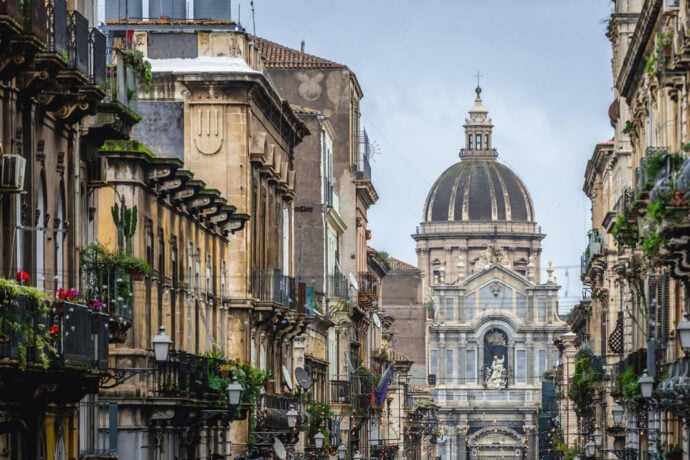
What to expect
LivTours’ Catania Tour is a comprehensive guided exploration of this gorgeous coastal city. Your private guide is a local professional that will share Catania’s fascinating history and sites with you. As you wander through the city’s charming streets and alleys, you’ll hear stories about the city’s rich history, culture, and gastronomical traditions. See the main landmarks such as the Cathedral of St. Agatha, the Ursino Castle, and the ancient Teatro Romano . Learn about important historical figures from Catania like the composer Vincenzo Bellini.
Get a feel for the vibrant daily life of the modern city by witnessing the bustling Fish Market and the busy shops of Via Etnea. Watch the plume of smoke as it rises out of the nearby volcano Mt. Etna and hear about how eruptions and earthquakes have shaped Catania’s history and landscape. Admire the Baroque art and architecture of the restored church, Chiesa San Benedetto. This private tour is the perfect opportunity to immerse yourself entirely in this beautiful and impressive city by the sea!
Why book this tour
- Discover Sicily’s iconic Catania by foot with a private, English-speaking guide.
- Admire the impressive Baroque architecture that characterizes Catania’s Cathedral.
- Snap pictures of 13th century Ursino’s Castle and learn about the Kingdom of Sicily.
- Go window shopping as you stroll down the famous Via Etnea, with Mt. Etna in view.
- See the Catania Fish Market & observe daily Sicilian life throughout this 2 hour tour
Exclusive private Tours and Experiences. Also offered in Spanish, French, Portuguese, Swedish and Russian
Our prices always include tickets and reservations fees (no waiting in lines!)
Our tour guides and staff are selected experts and speak perfect English
Easy to book and prepay your tours with our secure payment system
Eco-sustainable tourism, designed to respect and support local culture, art and traditions
Tour gallery
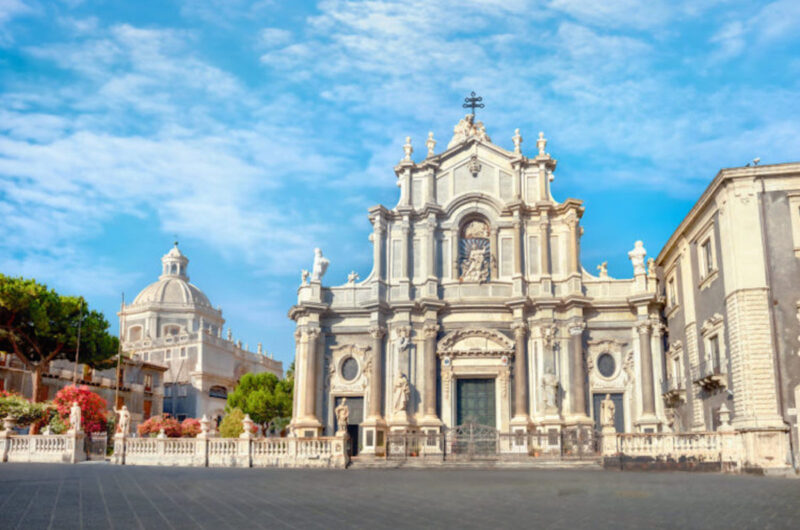
Read more about your private Catania tour
Your LivTours’ private Catania Tour begins in the city’s lovely historic center. You’ll meet your knowledgeable guide in front of the 12th century cathedral, in the picturesque Piazza Duomo. Dedicated to St. Agatha, this magnificent church has a fascinating history of destruction and reconstruction over the centuries from volcanic eruptions and earthquakes. Your guide will lead you inside where you’ll be struck and inspired by the soaring ceilings and Baroque style. See Bellini’s marble tomb inside.
Continuing on, you will visit one of Catania’s most striking landmarks, the Teatro Romano . Built in 300 BC, this wonderful archaeological site was the center of countless spectacles for up to 7,000 people at a time. Your guide will show you the physical markers that point to this ancient theater’s volcanic and seismic past.
Your guide will talk about Catania’s famous composer Vincenzo Bellini, born in 1801. Bellini’s music and bel canto style of opera were incredibly influential to other composers such as Chopin and Wagner.
Walk along the UNESCO recognized street of Via dei Crocifieri, which takes its name for the many Baroque monasteries and convents which line it. Visit the awe-inspiring Baroque church, Chiesa di San Benedetto. Among this restored church’s incredible art are Baroque candle holders dedicated to the city’s Patron Saint, St. Agatha. These, and many other relics are essential parts of the famous Festival of St. Agatha, celebrated annually for centuries.
Your guide will take you to see imposing Ursino’s Castle next. This 13th century castle was first built as the royal castle of the Kingdom of Sicily and then later became the seat of the Sicilian Parliament. Listen to the intriguing political history of Sicily, perfectly represented by this formidable structure.
This private tour of Catania is the perfect way of truly immersing yourself in this wonderful city’s culture and history. From its ancient Roman Theater to the lively morning Fish Market, Catania is a city you’ll love to get to know!
This Tour Includes
- Teatro Romano
- Via dei Crocifieri
- Chiesa di San Benedetto
- Ursino’s Castle
- Catania Cathedral
- Catania Fish Market
Know before you go
- Offered in: English, French, Spanish, Portuguese, and Italian. Please specify under “Additional notes” if you wish to book the tour in a language other than English.
- Places of worship on this itinerary have strict dress code requirements for entry. All participants are required to have shoulders and knees covered (no tank tops or short dresses) to enter.
- The Cathedral is an active church and on occasion may be closed for liturgical ceremonies.
Our Sustainable Tourism Promise
LivTours’ group size of max 6 participants is and always has been based on sustainable travel, and we are proud to be at the forefront of change and innovation in the industry. LivTours is committed to providing travelers with truly sustainable tours with the lowest possible environmental impact, all while supporting the local industries and people of each unique destination. To learn more about how you can actively support sustainable tourism and how LivTours is contributing, click here .
About our Private tours
When you book a LivTours Private Tour or Experience , you are guaranteed a dedicated, expert guide that allows you the flexibility to start your tour at a time which is convenient for you, making planning easy. Our private tours ensure that you will get a tailored experience to meet all your needs so we go at your pace, perfect for families with younger children, elderly, or individuals with accessibility needs. Please be advised that all private tours begin at a base price starting at two people* . Prices are inclusive of entry tickets where applicable. *Some Ferrari private experiences are inclusive of one person only.
Additional options
Make your experience even more unique by upgrading your LivTours experience. Please note: add-ons are non refundable.
Great introduction to Sicily
We thought this tour was very comprehensive and a great introduction to this Sicilian city. Our local guide was full of information about the history of the city, the importance of its position on the sea, the famous artists and musicians that came here and the delicious traditional cuisine...which we had ample opportunity to try! A tour we will definitely recommend to our friends and family!
Choose dates later / Buy as a gift
By selecting Choose Dates Later / Buy as Gift at booking, any tour can be purchased without fixed dates. This is the perfect option if you want to purchase your tour as a gift for a loved one, or if you are in the pre-planning phase of your vacation. After booking, you will receive a Travel Voucher Code and full instructions on how to schedule your tours when ready. Once your travel plans are confirmed, you can easily use the Travel Voucher Code on the LivTours website to formally schedule your tours. You can find out more here .
Book your tour
Privacy overview.

COMMENTS
Free walking tours in Catania Find unique free tours with GuruWalk in any city in the world Destination Dates. Quality PRO Quality Verified Languages German English Spanish French ... Guiding Sicily PRO Catania lovers free walking tour 99 ratings. 4.9 Duration: 2h and 15min Starts at: 10:00, 15:00 and 5 more tue 23. wed 24. thu 25. fri 26. sat ...
These experiences are best for walking tours in Catania: WalkingTour CATANIA - discovering the city of lava with a licensed guide; Catania Street Food Tour - Do Eat Better Experience; Catania Street Food Walking Tour; Etna excursion 3000 meters with 4x4 cable car and Trekking; Mt Etna and Wine tasting tour from Catania
Welcome to Catania, Sicily, the city of the Elephant. This walk was filmed on June 13th, 2020 starting at 8:30 AM in the Piazza Duomo. Be sure to turn on Clo...
Self-guided walking tour of Catania, Sicily. Catania is situated in Sicily at the foot of the impressive Mount Etna, with a panoramic view of the sea. The city was founded by the Greeks in 729 BC and it has accumulated a rich cultural heritage through thousands of years of history. Almost entirely rebuilt in the 18th century following the ...
Etna Tour in 4x4. 393. Explore Europe's highest active volcano with this Jeep tour on Mount Etna. Join a nature guide and head up to about 2,000 meters (6,500 feet) to discover lava flows and extinct craters, plus take in the views over the Caldera del Valle del Bove.
Catania Walking Tours are just some of the unforgettable experiences we can offer you. Infopoint: Via Merletta 3 / piazza Duomo, Catania, 95124 ... walking tour today in German, and it was simply fantastic. Our guide was Enza, who is incredibly knowledgeable about Catania, Sicily and history in general, and also very friendly and helpful with ...
We took the Catania walking tour today in German, and it was simply fantastic. Our guide was Enza, who is incredibly knowledgeable about Catania, Sicily and history in general, and also very friendly and helpful with all questions. We've learned a great deal, saw wonderful sights and can now appreciate our stay even more.
Full description. See another side to Sicily as you discover the natural beauty of Catania on this walking tour. Admire the Ursino Castle, walk around the squares and plazas and discover the famous sites. Meet your guide before departing on your adventure. Stroll the city center with your local guide who will fascinate you with the city's history.
An unforgettable journey through the past, present and future to understand the great soul of Catania and its people. Catania walking tour is a guided visit of the ancient city center: Meeting point h.10.30 in piazza Duomo (Info Point) Afternoon tours: from oct 15th to nov 4th meeting point 16,30. from nov 5th to dec 31st meeting point 15,30.
Explore the streets of Catania on a this walking tour. Learn from a local as you discover the city's top sights like the Piazza Duomo, the Catania Cathedral, and the Ursino Castle. ... Follow a local guide to uncover history, legends, and facinating anecdotes about daily life in Sicily. Get tips on what to see and do during your time in the city.
Welcome to this breathtaking 4K walking tour of Catania, Sicily! Join us on this virtual adventure through Italy as we explore the vibrant culture, bustling ...
Catania is a beautiful city that has fascinated travelers for centuries. The city and its people have a strong connection with the volcano because we are made of the same substance.. We are licensed local guides and long-time friends who decided to start a free walking tour and private tours project to offer a deeper and original experience of Catania through the eyes of Catanesi DOC to all ...
Welcome to our Sicily Walking Tour of the Catania Historic District! In this video, we'll take you on a virtual journey through the charming streets of Catan...
The final stop on the walking tour of Catania is the gorgeous oasis of Villa Bellini (also known as Giardino Bellini). It's Catania's main park, and it is beautiful. Gorgeous Villa Bellini. The area was originally owned by a prince in the 1700s, but was purchased by the city in 1854.
Self-guided walking tours in Catania, Italy. Follow these 2 expert designed self-guided walking tours to explore the city on foot at your own pace. All Cities; ... Article (B): Eats: Catania, Sicily. Article (B): The Effortless Sightseeing Guide to Catania, Sicily. The Most Popular Cities / view all. Amsterdam. Antigua. Athens. Auckland ...
6. from $1,564.32. Per group. Sicily, Italy. Full day boat excursion to Palermo with lunch. 130. from $174.06. Sicily, Italy. Etna excursion 3000 meters with 4x4 cable car and Trekking.
Catania is pure Sicily. Let the hustle and bustle sink in and focus on its Unesco listed wonders, on the many baroque piazzas or the palazzi towers and domes. ... Catania Private Walking Tour With A Professional Guide cancellation policy: For a full refund, cancel at least 24 hours in advance of the start date of the experience.
These inclusions ensure that you have everything you need for a comfortable and enjoyable walking tour of Catania. Meeting and Pickup. The designated meeting point for the Catania walking tour is the iconic elephant statue located at Piazza del Duomo in Catania CT, Italy.This stunning statue, known as 'Liotru,' is a must-see attraction in the city and serves as the perfect gathering spot ...
Walking Tour: Historic Catania. Start: Castello Ursino.. Finish: Piazza Università.. Time: 4 1/2 hours, including brief visits inside churches and monuments.. Best Times: Mornings before noon, when the food market is at its busiest.. Worst Times: After dark, when the alleyways of the old town are unsafe.. Begin your tour amid the palms and palmettos of the piazza in front of the massive and ...
Catania, a lively port city on the eastern coast of Sicily, Italy, is a captivating destination known for its rich history, vibrant culture, and stunning nat...
LivTours' Catania Tour is a comprehensive guided exploration of this gorgeous coastal city. Your private guide is a local professional that will share Catania's fascinating history and sites with you. As you wander through the city's charming streets and alleys, you'll hear stories about the city's rich history, culture, and gastronomical traditions.
We recorded this 4k ultra hd video during our trip to Catania, Italy on June 2022. Catania is a vibrant city situated on the east coast of Sicily, Italy, at ...
Welcome to our Sicily Walking Tour of the Catania Historic District! In this video, we'll take you on a virtual journey through the charming streets of Catan...